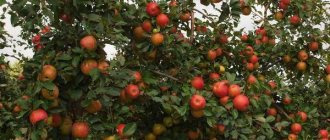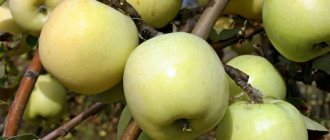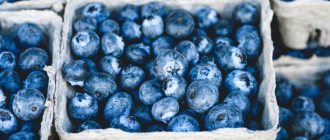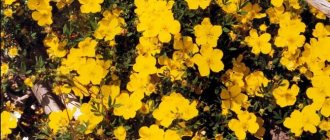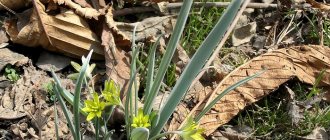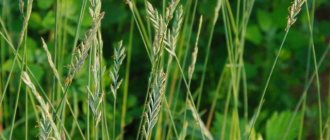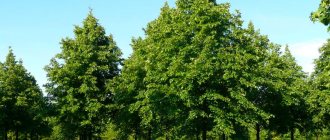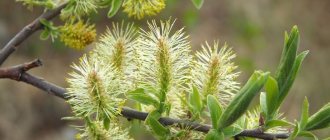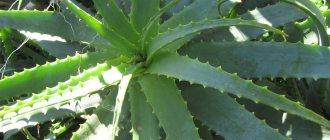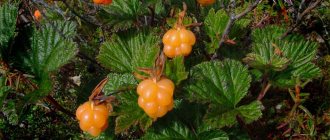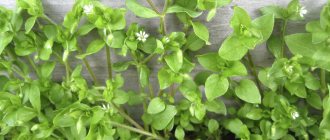Sucker: description and meaning of the plant name
The etymology of the word is not entirely clear, but in biology there is a whole family of plants called “suckers”. In different countries you can find different names for this plant. So, in Central Asia it is called jigida or jida. In Greece - elaeagnus, which loosely translated means "Abraham's olive tree." The name pshat is also known, but all these names do not reflect the beneficial properties that the plant is rich in.
The most valuable thing in a plant is the fruit. The berry is a drupe with mealy sweet pulp and an elliptical seed. It is eaten raw, dried, added to dishes, and medicinal decoctions and infusions are prepared.
Description
Evergreen (like myrtle) or deciduous (hazel) trees or bushes. Most varieties are thorny. The leaves are short-petiolate, silvery with scales or felt-like with star-shaped hairs.
Flowers can grow singly or in bunches. Their shape is four-lobed, tubular-bell-shaped. Without petals with 4 stamens.
The fruit of a bush or tree is a berry. This is a drupe with an elliptical bone. The berry tastes sweetish.
Shrubs tolerate drought well. They are easy to care for and good honey plants. The soil where the sucker grows is enriched with nitrogen. This is explained by the fact that its roots contain bacteria that can accumulate and fix this element in the soil.
Popular types of sucker
In total, there are more than 100 species of sucker in the world, which grow in Europe, Japan, and China. However, the following varieties have taken root in our area.
Sucker umbrella
Its greatest accumulation is observed in East Asia, since the plant does not tolerate winter well
. If it still survives a temperature of -5 °C, then at -10 °C it can die. The umbrella oleaster reaches a height of 4 m, and the crown grows up to 160 cm. The leaves are light green, lanceolate. Already in May it produces yellowish-silver flowers, which are very attractive to bees - the plant is considered an excellent honey plant.
Elf prickly
Elf prickly is an evergreen shrub species that grows up to 7 m in height.
Its spreading branches are covered with thick spines, and oblong-elliptical leaves with wavy edges grow on them. They are silvery-brown below and shiny dark green above. Sometimes side shoots appear on the branches, with which it clings to neighboring plants or objects. Then it develops like a climbing plant.
The flowers of the plant are silver-white on top and golden in color at the core. They grow in bunches of 2-3 pieces and emit a strong aroma. At the end of flowering, they initially produce a greenish-brown fruit, which turns red as it ripens. For its special beauty and unpretentiousness, it is revered by landscape designers, who use it to form hedges.
Elf multiflorum
A relatively low, up to 1.5 m in height, shrub that does not have thorns.
Oval, slightly oblong leaves grow on brown-red scaly branches. They are silvery scaly above and silvery brown below. In June it is covered with yellowish-white bell-shaped flowers. In August, in their place large red berries are formed on thin long drooping stalks. Their pulp is sour, juicy, rich in such useful substances as amino acids, glutamic and aspartic acids, arginine, lysine.
Silver goof
North America is considered the birthplace of the shrub. Silver oleaster has a description similar to multifloral. Its branches are not covered with thorns, the young bark has a brown tint, and the old bark is silvery. The leaves are leathery on both sides, but have brown scales underneath. It produces flowers that are the same in color, aroma and honey production as other species. They appear in mid-summer and last about 20 days. If the bush is more than 8 years old, at the end of flowering, scaly fruits are formed in their place, which ripen only in September.
The shrub reaches a height of 4 m, tolerates drought worse than the species described above, but is more frost-resistant. Feels good in city conditions, but grows very slowly.
Thanks to its beautiful fruits and leaves, it is widely used in landscape design.
Elf angustifolia
In the wild, this plant can be found on the banks of rivers and lakes in Central and Asia Minor, in Kazakhstan, the Caucasus, and also in the southern part of Russia. It is also grown there as a cultivated plant, although it is called completely differently. If you don’t understand what jida is, know that we are talking about this particular type of sucker.
It is a spreading deciduous shrub that grows up to 10 m in height.
It has red-brown bark covered with silvery scaly hairs. The branches grow spines up to 3 cm in length and soft lanceolate leaves up to 8 cm in length. They are light green on top and covered with silvery-white scales underneath.
The flowers are just as fragrant, but slightly different in color - yellowish on the outside and silvery on the inside. They also last no more than 20 days after the start of flowering. Then the berry is set, which as it ripens changes from a silvery tint to a yellowish-brown one.
Elf angustifolia has a deep root system, so it develops relatively quickly, is drought-resistant, frost-resistant and easily tolerates the polluted air of megacities. Often used as a hedge and in compositions against a background of dark greenery.
Rules for planting seedlings
Based on their natural habitat, silver suckers grow well on any soil except acidic ones, so in case of high acidity they need to be deacidified in any convenient way. For example, add slaked lime. If the soil is heavy and water stagnates in it, then it is advisable to add coarse sand.
The seedling is planted in early autumn so that it can adapt to a new location before the cold weather, or in the spring, when positive day and night temperatures have established. The site is chosen in a sunny or slightly shaded place for part of the day, dug up in advance, and humus and compost are added. In full shade, fewer flowers and, accordingly, fruits are produced, and the bush looks less decorative.
Your own designer: Garden ornamental trees
Planting stages:
- dig holes 0.5 m deep and 1 m wide, the distance between them depends on the type of planting (hedge, single, group, composition);
- pour drainage from small stones, gravel, crushed stone, sand at the bottom;
- Fill one third of the volume with a mixture of garden soil, humus, sand and fertilizers (30-40 g of nitrogen, 500-700 g of ash or potassium fertilizer, 200-250 g of superphosphate);
- place a seedling in the center, install a peg for support, fill in the voids (the root collar should be buried 5-8 cm), compact, water;
- tie it to a support, mulch the tree trunk circle with humus or compost.
Related article:
How to care for fruit tree seedlings
It is not recommended to use fresh sawdust as mulch - as they decompose, they acidify the soil.
The use of sucker in folk medicine
The plant is known for its astringent properties, so various anti-diarrhea remedies are prepared from it. Decoctions and infusions have a bactericidal and anti-inflammatory effect. They are used in the treatment of helminths and inflammation of the gastrointestinal tract. Most often, leaves and fruits of shrubs are used for such purposes.
Lox also perfectly treats colds, its antipyretic properties are especially valued. Due to its anti-inflammatory effect, it is successfully used to relieve pain from gout, rheumatism, and radiculitis. In this case, lotions are made from the leaves of the plant. Decoctions of flowers heal wounds and are used for hypertension, edema, and colitis.
But the most valuable and richest part of the plant is its fruits.
If you consume them raw, you can improve your memory, tone your body and strengthen it. Berries have a positive effect on the cardiovascular system. In addition, the fruits have an excellent taste; jams and compotes are prepared from them.
A beautiful plant from oriental gardens has long gained popularity in Europe and other parts of the world. Landscape designers value it for its unusual leaves and bright fruits, beekeepers for its fragrant flowers rich in nectar, and traditional healers for its huge range of useful substances.
They treat diseases of the cardiovascular system, intestines, and respiratory tract. Sucker is effective in treating hypertension, rheumatic pain, and removing helminths from the body. And the Chinese and Japanese still believe that a sucker can restore youth to the body.
Application of the plant
Silver oleaster lumber lends itself well to processing and is used in carpentry. Various small parts for furniture and musical instruments are turned from it. Gum extracted from waste is used in printing houses and the textile industry.
The berries, flowers, and leaves of the euphemum have valuable medicinal properties and are used in traditional medicine. The pulp of the fruit is edible, tastes like cherries, contains carbohydrates, vegetable protein, vitamins, organic acids, phytocyanins, and antioxidants. Catechins, tannins, steroids, alkaloids and many other active substances were found in the leaves and flowers. You can make compotes, preserves and jams from the berries.
Infusions and decoctions of herbs and fruits are used as an anti-inflammatory, anthelmintic, bactericidal, choleretic and analgesic. They treat skin lesions, gastrointestinal ailments, and cardiovascular disorders.
Silver elk honey is considered one of the most useful. It is recommended for patients with pancreatitis and gastric diseases.
Description, types and healing properties of the oleaster plant
There are about 100 plant species in the world. Most often these are trees and shrubs, which are popularly called pshat and jida, depending on where they grow. Asia Minor is considered the birthplace of this medicinal plant, although pshat is often found in Russia and the CIS countries. The first records of this plant date back to 1864; the French botanist Olivier mentioned the sucker in his writings. The medicinal properties of the culture allow it to be used to treat a number of diseases.
Most often, the oleaster plant is a subshrub or tree. For growth it prefers a temperate climate with frequent precipitation. Grows in Japan, China, Kazakhstan. In Russia it grows in some areas of Siberia.
According to the description, the height of the tree reaches 5–6 meters, the bush is no more than 3 meters high. The plant is considered evergreen; the stems are often studded with prickly thorns. The leaves of the shrub are oblong, alternate, with a silvery tint or slightly pubescent. They are attached to the stems using short petioles.
The flowers are often bisexual and solitary. There are no petals, the calyx is campanulate-tubular, four-lobed. Flowering is abundant, lasts about a month, and begins in spring. The flowers exude a pleasant, slightly spicy aroma. In early autumn, drupes appear on the tree. Their pulp is dry and astringent, with a sweetish taste. The skin color varies from orange to red. The plant propagates by seeds and cuttings.
Sucker: description and meaning of the plant name
Elf is a small ornamental tree of the Elk family. There are evergreen and deciduous species of shrubs, most of them are thorny. They grow in Asia, North America and Russia. The silvery shoots and large green leaves with petioles, which turn bright yellow in the fall, give the plant special beauty.
In spring, the sucker produces single or clustered yellow-green flowers. They are very fragrant, honey-bearing and attract bees. The fruits of the plant are red-pink, oblong, with a stone (drupe). The sweet pulp can be eaten.
Growing such a tree is easy.
The sucker is not picky, loves light, survives well in arid areas, and does not require special soil.
The plant received its Latin name from the Greek term “elaiagnos”, which includes two words: “elaia” - berry, olive and “agnos” - tree of Abraham. The sucker was named so because the trunk, leaves and berries of the plant are very similar in shape and color to the olive tree.
In different countries the shrub is called differently. In Japan - gummi, in India - pshat, and in the countries of Central Asia - jida, jigida. Europeans call the plant wild olive, and Russians call it lokhovnik, silver tree.
The berries of the plant, which contain many valuable microelements, are widely used:
- tannins (tannin);
- protein complexes;
- carbohydrates (glucose, fructose);
- potassium, magnesium (salts);
- organic acids;
- vitamins C, E.
The rich composition of the plant determines the beneficial properties of oleaster:
- Normalizes digestion.
- Strengthens the heart and blood vessels, reduces the risk of heart attacks.
- Has a sedative effect on the body, calms.
- Removes parasites from the body.
- Normalizes the functioning of the nervous system.
- Promotes wound healing.
- Tones and strengthens the immune system.
Leaf leaves contain a large amount of ascorbic acid, which strengthens the immune system. Therefore, it is useful to drink tea made from dry raw materials during seasonal colds. The flowers produce a fragrant essential oil.
Common types and varieties
They name a different number of varieties of sucker, which is widespread throughout the world. Some sources indicate the number 40, others, in particular The Plant List, count 98 species and 331 variant names (varieties, including synonyms).
Elf Chilean
This phrase is used in the colloquial speech of our compatriots. It does not actually designate a variety of the oleaster plant. This shrub is not cultivated in Chile; there is no Chilean shrub among its species. This phrase, based on a fictitious name, has a slang connotation.
Multifloral oleaginus
This type of plant is common in China and Japan. Locals call it gumi. In our country, this species also adapts normally, the plant is frost-resistant.
- The tree does not grow higher than 1-1.5 meters.
- The shoots are scaly and red in color.
- The oval leaves also have silvery scales, the bottom is brown.
- In mid-June, flowers appear: not single, but in whole inflorescences. They resemble bells and have a white-yellow tint.
This plant variety is characterized by high productivity. The large fruits of the multi-flowered oleaster ripen in August. They are bright red, have long stalks, and look like dates. The berries are juicy, have a sour taste and are very healthy. The Japanese call them the fruits of longevity.
Eleven angustifolia description care
Eleven angustifolia photo, description, reproduction, planting and care, fruit seedlings, beneficial properties of the plant, medicinal use, distribution
Latin name Elaeagnus angustifolia L.
Family Elaeagnaceae Juss. – Suckers
Elf angustifolia
Description
Elf angustifolia is a low-trunked tree up to 8–10 m tall or a large shrub with an irregular crown shape.
The bark is shiny or brownish-brown, the branches are equipped with large spines.
Annual shoots and leaves are covered with silvery-star-shaped scales.
The leaves are alternate, oblong-elliptic, lanceolate, entire, up to 8 cm long. Green above, greenish-silver below.
The flowers are small, axillary, 1–3, lemon yellow inside, silvery white outside, very fragrant.
The fruits are drupes with mealy pulp, initially silvery, later turning brown, edible.
Blooms in May - June. Ripens in September.
Elf angustifolia is common in the Caucasus and Central Asia.
It grows along the banks of rivers, lakes and in oases of the mid-mountain zone.
Reproduction methods
Plants reproduce by seeds, root suckers, layering, and dividing the bush. Propagation by cuttings is possible, but the survival rate of such seedlings is very low, so preference is given to other methods.
Seeds
Seed seeds are planted in the ground in the fall before the onset of frost or in the spring, when the soil thaws and the top layer warms up. When planting in spring, stratification is required for 2-3 months at a temperature of 1-10 °C. To do this, the bones, wrapped in film, are kept in the refrigerator, on a glazed balcony, in a cool room.
A small bed is dug up, the seeds are planted in furrows to a depth of 2.5-3 cm, leaving 15-20 cm between them. When the seedlings grow a little, weak and frail ones are removed. Transplantation to a permanent place is carried out after the seedling has grown stronger.
Related article:
Not only willows cry: 8 trees with a weeping crown for your garden
Root suckers
The oleaster bush produces a large number of root suckers, which are regularly removed to give the bush a neat shape. Separating the shoot is not difficult - you just need to cut it off with a sharp shovel so that the root remains on it. Then the seedling is planted in a hole prepared in advance and watered.
When planting in autumn, you need to calculate the timing so that the seedling has time to take root before winter, and in the spring it is planted before the onset of the hot period. For the winter, the young plant is covered with branches and spunbond.
By layering
For propagation by layering, choose not an old strong side shoot, located close to the ground. Cuts are made on the bark, the branch is bent, placed in a small groove dug under the bush, secured with wire, covered with earth, and moistened. Care consists of regular watering. When the branch takes root, it is cut off from the mother bush and planted in a permanent place.
Related article:
Sanitary pruning of the garden: 5 basic principles, the observance of which will give good results
Dividing the bush
If the bush is small, then they dig it around the perimeter, stepping back from the center by 30-40 cm, take it out, and divide it into parts. Cuts on the roots are sprinkled with ash for disinfection. The cuttings are planted in pre-prepared holes, tied up, and watered. If the bush is mature and large, then they find a part where there are more young shoots and cut it off, digging up only this area.
Growing
Agricultural technology
Winter-hardy (good) and highly drought-resistant (excellent), almost not damaged by diseases and pests (good). It blooms in late May - early June, bears fruit in September, self-sows (excellent), especially numerous on light, light soils. Very light-loving, undemanding to soil, although it grows better on rich sandy loams. Tolerates salinity and flooding, and is superior to all tree species in terms of gas resistance. Takes a haircut well.
Elf angustifolia Planting care reproduction
Propagated by seeds, cuttings and layering.
Application
Sucker gum is used for calico printing, book printing, making glue, paints and varnishes, and the bark is used for dyeing fabrics brown and black and for tanning leather. The wood is used to make musical instruments. The leaves are food for goats, sheep and camels.
Food use
The fruits are eaten fresh and dried as a seasoning for main courses. You can use them to make flour, bread, confectionery, pastille, syrup and kvass.
Use in landscape design
Eleven angustifolia is decorative with silvery foliage, contrasting against the background of other tree plantings, and numerous fragrant flowers. Decorative durability 30–40 years.
It is recommended for creating hedges, as a valuable forest reclamation species, for strengthening slopes, screes, river banks, afforesting inconvenient areas with saline soils, as well as for landscaping heavily polluted industrial areas.
Medicinal use
Loja preparations exhibit hypotensive, anti-inflammatory, wound-healing, diuretic, antipyretic, astringent, anthelmintic and expectorant effects. The sum of coumarins, flavonoids and alkaloids exhibits an antibacterial effect against pathogens of the typhoparatyphoid group.
Collection and processing of medicinal raw materials
The medicinal raw materials are leaves, flowers and fruits. Leaves are collected in the first half of summer, flowers - during the flowering period.
Leaves are dried under a canopy or in a dryer at a temperature of 40.50°C, flowers - no more than 40°C, fruits in the usual way.
Application in official and folk medicine
Fresh leaves of the plant are applied to purulent wounds to relieve inflammation and speed up the healing process. Bandages are changed every day.
A decoction of dry leaves is prescribed for colds and severe fever. They are used to rinse the mouth during inflammatory processes. Poultices and lotions are used for radiculitis, rheumatic and gouty pain. For inflammatory diseases of the stomach and colon, the decoction is used internally.
Flowers in the form of tinctures and infusions are used for diseases of the upper respiratory tract, to enhance the activity of the heart muscle, for hypertension and as an antipyretic. Fresh juice is effective against malaria and high blood pressure. The fruits of the oleaster are used for diseases of the upper respiratory tract as an expectorant. The decoction has a positive effect on diarrhea of any origin, indigestion, inflammatory processes in the small and large intestines and toothache.
Fruit tincture is used as an astringent, anti-inflammatory and anthelmintic agent. Seed tincture is used for fever and skin rashes. To prepare a decoction, pour 30 g of fruit into 1 glass of hot water, boil in a closed enamel container in a water bath for 30 minutes, strain while hot through two or three layers of gauze, squeeze and bring the volume to the original volume. Store in the refrigerator for no more than 2 days. Take warm, 2 tablespoons 3-4 times a day before meals.
An infusion of flowers is prepared at the rate of 6 g of raw material per 1 glass of hot water, boiled in a closed enamel container in a water bath for 15 minutes, cooled for 45 minutes, filtered, squeezed and brought to the original volume. Take one-half glass 3 times a day before meals.
A tincture of flowers is prepared with 40% alcohol or vodka in a ratio of 1:10 and kept in a warm place for 10 days. Take 10-20 drops 3 times a day before meals.
Use in alternative medicine
Preparations with lox lower blood pressure, have a positive effect on cardiac activity, and improve blood circulation.
Due to the high content of astringents, folk medicines prepared from wood raw materials are often used in folk medicine to eliminate diarrhea, including in children. The fruits are hypoallergenic and contain no toxic components. In addition, the berries and flowers of this plant are in demand for treatment:
- chills;
- stomach upsets;
- colds;
- hypertension;
- sleep disorders;
- enterocolitis.
Products based on this plant are used to treat rheumatism and gout, as well as wound healing.
Fresh crushed leaves of silver oleaster are used as a wound-healing and anti-inflammatory agent for application to purulent wounds.
Preparation and storage of raw materials from silver elk
The leaves of this plant are collected in June. Flowers are picked in May. Then the raw materials are scattered onto cotton or linen cloth and placed to dry in a well-ventilated attic or barn.
The berries are harvested in early autumn. They are also suitable for drying. Dehydrated raw materials should be stored in canvas bags for no more than 2 years.
ripe oleaster berries are used in cooking to make compotes and healthy desserts
Elk sucker: description, common types, use of the plant in folk medicine
Elf is a tree-like thorny shrub that has a number of useful properties used in various spheres of human activity. Musical instruments are made from its wood, its leaves and bark are suitable for tanning and dyeing leather, and glue is made from its gum. Elf is a good honey plant and a unique medicinal plant, which also has nutritional value.
The most valuable, from the point of view of traditional medicine, are its fruits, although flowers, leaves, bark and resin are also used for medicinal purposes. The fruits of this shrub contain proteins and carbohydrates, tannins and dyes, organic acids, phosphorus and potassium salts. The leaves contain vitamins E and C, the flowers contain essential oil.
When preparing raw materials, leaves are collected in the first half of summer, flowers - in May and early June. They are dried under a canopy or in special dryers at a temperature not exceeding 40–50 °C. Finished raw materials can be stored for up to two years, after which they lose their beneficial properties.
Narrow-leaved sucker as a honey plant
One of the good honey plants is the silver oleaster, which is a small tree, or rather a shrub, with silvery shoots. The bark on it is dark brown with a brown tint, and the flowers are silvery-white. They bloom in the leaf axils, one or three flowers in one axil. The flowering time of the oleaster is May and June. The fruits, which ripen by September, are edible and have a sweetish taste. The distribution areas of the silver sucker are the Caucasus, Central Asia, Ukraine, as well as central Russia. Several species of oleaster grow in Azerbaijan. These are narrow-leaved sucker, pshat, jeddah and Caspian sucker. Their difference lies in the shape of the leaves and fruits. If we look at the angustifolia, its leaves are covered with fluff only on the underside, they are smooth and green on top, and silver-green below. The fruits have an elongated shape, reaching a length of 10 to 20 millimeters. Unlike the narrow-leaved oleaster, the leaves of the Caspian oleaster are pubescent on both sides and have a silver-green color. The fruits are spherical, which are much smaller than those of its relative. They range from 6 to 8 millimeters in diameter. Narrow-leaved sucker can most often be found in the lowland zone up to the lower mountain zone, as well as the middle mountain zone. Its favorite places to grow are ravines and forest edges. The cultivated sucker grows in low-lying areas. The Caspian variety of shrub grows in the Lesser and Greater Caucasus. It is found in lowlands, river deltas, on pebble deposits, on sandy soils and along the edges of cliffs. This shrub is often planted along roadsides, as well as in steppe and forest belts, parks, and it is used to landscape city boulevards. The fruits of the oleaster can give a person many useful substances, the mealy part of which contains a substance that is part of the drug for treating the stomach and gastrointestinal tract. This drug is called “Pshatin.” It acts as an analogue of astringents, and it can also be used for rinsing the mouth for various inflammatory diseases. The drugs from this series are “Lokhtan” and “Lohpektan”. The first of which is crushed pulp of the fruit, the second is powder from the whole fruit. If you do a chemical analysis of the substances that make up the trunk and bark, you can find a high content of alkaloids and tannins, as well as gum and dyes. The sucker grows relatively quickly into an adult tree and is able to withstand heat and lack of moisture. You don’t hear about this plant as often as the honey plant. However, from the literature we know about its honey-producing properties and good attendance by bees. A bribe from a sucker is usually not the main one, but a supporting one. There is no exact information about whether bees collect pollen from the oleaster. On the Mugan Plain, work was carried out to study the honey-bearing properties of the narrow-leaved oleaster and its attractiveness to bees. The weather conditions on the Mugan Plain are almost identical to the climate characteristic of the areas where the oleaster grows. Research conducted over more than one year has shown that the time when this shrub begins to bloom depends on weather conditions. The earliest date of the onset of flowering recorded during the observation period was May 15, and the latest was May 25. In general, the shrub blooms for about 17 days, which again may vary depending on weather conditions throughout the flowering period. Bees visit the flowering oleaster throughout its entire flowering period, from the first day to the last. Bees carry light cream-colored pollen from the oleaster, collect mainly nectar, and can bring pollen in small quantities. The nectaries of the sucker are a glandular ring, which is located in the very depths of the corolla. The amount of nectar secreted varies depending on the time of day. On windless and clear days, the bush produces nectar abundantly, but its largest volume is contained in the hours from 10 am to 5 pm. Considering that the average air temperature varies from 26 to 30 degrees Celsius. An experiment was conducted to change the honey-bearing ability of the oleaster. For this purpose, 11 bee colonies of average endurance were brought to the Salyan region at the very beginning of the flowering of the bush. The next day after the move, the insects were already carrying nectar from the sucker, and this continued until the very last day. The most intense honey flow was observed in the period from 12 to 17 o'clock; bees flew out in the morning, and after 5 o'clock in the evening they slowed down. During the honey harvest, the bees built four new honeycombs and collected about 10 kilograms of honey. If these were strong, specially trained families of bees, then from the bush one could easily get 16 kilograms of pure honey without impurities. As we can see from the experiment, collecting nectar from the sucker contributes to the construction of honeycombs, increasing the strength of the bee colony by the beginning of the main honey collection. Honey produced by strong families can be safely put up for sale. A special advantage of the oleaster is its flowering time. Since the shrub blooms in May and early June, there are not yet many other plants that produce a sufficient amount of nectar, which allows the bees not to burn up their energy on different bribes. The aromatic and taste properties of honey collected from oleaster are also highly valued. The smell of this honey is sweet and subtle, and the taste is delicate. In addition, it does not crystallize well and remains liquid throughout almost the entire winter, so it is good to leave it for bees for winter food. Many people have appreciated the wonderful color and taste of this honey. From everything described above, we can conclude that the narrow-leaved sucker is an excellent honey plant, which will consistently produce a harvest every year due to its vigorous flowering. This shrub is useful for planting around the perimeter of apiaries. It is possible to propagate narrow-leaved sucker using rhizomes, suckers, cuttings and seeds. Based on materials from the journal Beekeeping.
